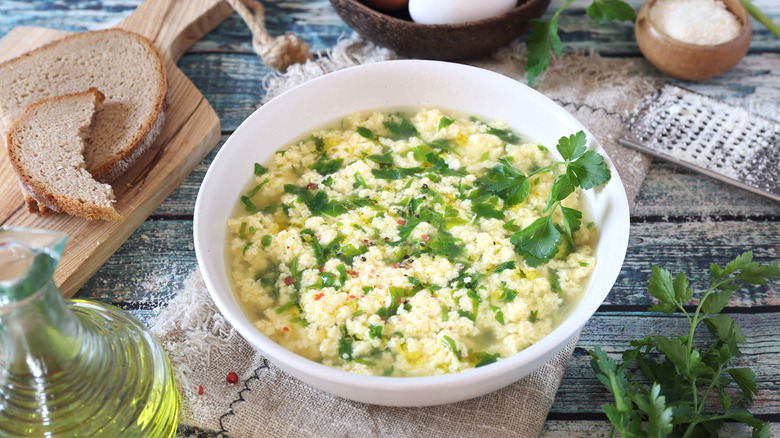In Italy, Stracciatella Is More Than Just An Ice Cream Flavor
It's a hot summer day, and you're looking for something that's refreshing and keeps you cool. Most of us would go to the nearest ice cream shop and grab a scoop or two of the frozen dessert that's beloved by people of all ages.
Ice cream or gelato, it's all the same, right? Well, that's not the case, as ice cream and gelato are actually very similar, but still different. The Spruce Eats explains that although both are based on milk and cream, gelato contains more whole milk than cream, while ice cream has more cream than milk, hence the name.
In addition, gelato is usually made without eggs, and ice cream often includes egg yolks. There's also a difference in texture — the Italian gelato is typically more smooth and silky than ice cream. In Italy, there's a vast array of classic gelato flavors to choose from, and chocolate, lemon, mint, fior di latte, pistachio, and tiramisù are just some of them. And consider Giada de Laurentiis' favorite type of gelato: stracciatella, a "milk-based ice cream with chocolate shavings" that's a popular flavor in "the Italian gelaterie as well as in most ice cream shops" in the United States, according to Chef's Pencil.
'Stracciatella' refers to an ice cream flavor, a cheese, and a soup
The popular stracciatella was invented in Bergamo by Enrico Panattoni, and his original recipe included milk, sugar, egg yolks, and dark chocolate. The melted chocolate was poured into the mixture, and as it made contact with the frozen cream, it "ripped itself up," according to Visit Bergamo.
However, the name of this popular flavor isn't reserved for just ice cream. La Cucina Italiana reports that the name stracciatella can also refer to a cheese from Puglia and a traditional soup originating from Rome.
Stracciatella cheese is fresh and soft, and you might've already tried it because it's actually the "delicious center of burrata" cheese (per The Washington Post). Straciatella soup, on the other hand, is the Italian egg drop soup made by whisking a mixture of eggs and grated Parmigiano-Reggiano cheese into meat-based stock. When whisked, the combination disperses into small, light rags (per Serious Eats). And although these foods are homonymous — they share the same name but have different meanings — all of them are delicious and worth a try.

